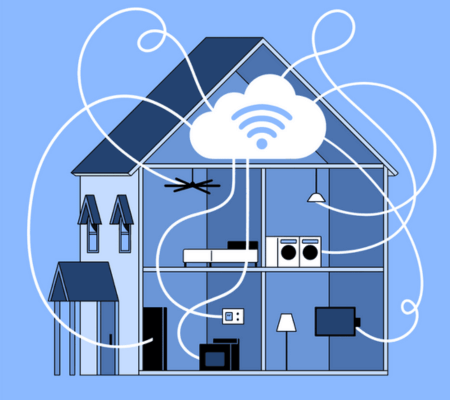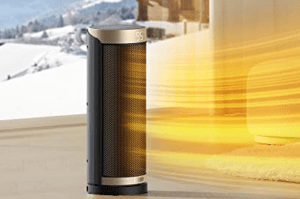Is infrared heat good for you? When choosing a heating system, many people are looking for opinions on infrared heating, a technology still unknown to many of us. In fact, it is the least known thermal emission technology. For this reason, it is interesting to know in a little more detail about infrared heating or also known as infrared stoves or infrared radiators.
In the following article, we will help you understand the following questions: What is infrared heating? How does it work? Is it a low-consumption heater? Is it more efficient than a classic heater? Keep reading.

Related: Top 10 Best Infrared Heating Pad
Table of Contents
ToggleWhat is Infrared Heating?
If we speak from the scientific point of view, we can say that infrared heat is that which is transmitted by the radiation of the waves that are to the left of visible light (infrared). Infrared radiation or IR radiation is a type of electromagnetic and thermal radiation.
Therefore, infrared heating consists of the emission of harmless rays that directly heat solid objects such as walls, floors, furniture, and even people. Unlike traditional heating systems, where the majority, in general, what it does is generate hot air by convection: heat the air and make it circulate in the room.
The rays emitted by infrared heating can be distinguished into 3 different types depending on the length of the wave: short, medium, and long. Short-wave or high-frequency rays are the ones that produce a red light when they are in operation.
The medium wave rays are heated to 900 ºC, which is suitable, above all, for drying objects. Finally, the long waves are used for heating interiors, where a low level of heat is present and a preheating time is needed.
In short, the experts affirm that infrared heating is the most ecological heating in existence since it does not generate CO2 emissions into the atmosphere, and in turn, the useful life is much longer if we compare it to any other type of heating. But why? Being made with 95% recyclable materials, it takes care not only of your home but also of the environment.
How Does Infrared Heating Work?
Before going into more detail about the operation of infrared heating, it is advisable to remember the operation of any heating. The purpose of most heating systems is to heat spaces or rooms using air as heat transition (convection).
For this reason, people do not open the doors or windows when using the heating, since if they did, the air would escape, and with it the heat accumulated in the room or room. However, in the end, the hot air always rises towards the ceiling and this is when the desired comfort is lost, meaning that we must constantly heat the air and consume energy again.
Now, infrared heat is not transmitted through the air, but rather by infrared waves. More commonly known as “radiant heat”. The ceiling, walls, floor, furniture, etc. are responsible for accumulating heat and then releasing this heat slowly to keep rooms or rooms warm for a long time.
There are many manufacturers of infrared heating that, when explaining the aforementioned operation, compare it with the same process that imitates the sun when heating the planet Earth. We must not forget that the sun also uses infrared waves to heat the Earth.
Why is Infrared Heat Good for You?
Security and Health
It is one of the things to take into account in heating systems. When talking about infrared heating, we are talking about very safe heating since it controls the heat sufficiently is necessary, and rules out any type of fire or burn.
Not only is it safe, but it is also very healthy for human beings. Since it does not cause any kind of problems for people who have respiratory problems. In the case of other heating systems, it could become a problem.
Infrared Heating Surprises with its Designs
This type of heating lends itself to having equipment with very varied and creative designs. Many different ones can be found, including infrared panels that feature mirrors or even blackboards. Infrared heating manufacturers try every day to innovate with their equipment and this can be very attractive to end users or buyers.
Infrared Heating Efficiency
Infrared heating represents economic and energy savings if we compare it with other traditional systems. However, in this area there is a division in terms of two opinions:
➪ The manufacturers argue that the system is efficient since it does not heat the air but rather the materials directly.
➪ On the other hand, there is an opinion that the infrared heating system, being connected to the electric current, cannot be considered completely efficient. They also affirm that its economic optimization is thanks to the fact that it is a team 5 times less powerful than any other heater that we can find on the market.
➪ The OCU in the past stated that infrared heating is not one of the most efficient systems when it comes to heating rooms or rooms of medium or large size. Since it is required that the system be turned on for many hours or have many plates. Per says that if the winter is very strong or very cold, it could be a good option only for small rooms or in bathrooms.
➪ Infrared heating allows great economic and energy savings. Many manufacturers affirm this through an estimate of the energy savings provided by the products they manufacture. Even so, we want to clarify that it also depends on other factors that we can find, for example, the thermal insulation of the facade.
If we make a comparison between three of the companies focused on this topic, we find different statements. Hearart assures that the costs derived from an infrared heating system barely represent a cost of $9 per year per square meter. This can translate into savings of up to 50% compared to other traditional heating systems.
On the other hand, the Heat4All ICONIC firm states that with its panels it is possible to achieve up to 70% energy and monetary savings compared to other heating systems on the market. Finally, IR-RADIANT speculates a little more about their infrared heating systems and they dare to ensure that it is possible to save up to 80% on the costs of the electricity bill.
Advantages of Infrared Heating
| Advantages | Why? |
| secure systems | ✓ Does not use any fuel and there are no risks of explosions |
Economic |
✓ The experts consider that it is one of the most economical systems on the market ✓ It does not require fuel but it does have an electrical consumption |
| much more modern | ✓ No need for radiators ✓ You can innovate more with plates that refract heat ✓ In most cases they are mirrors or even blackboards |
| do not affect health | ✓ It is the healthiest since it only channels heat without any type of fuel |
Installation and Prices of Infrared Heating
This type of heating consists of three elements: a panel from which all the infrared rays come out, a thermostat that is responsible for controlling the temperature, and an electrical connection that is responsible for powering the system.
The installation of infrared heating is quite simple and It does not require much knowledge of the subject. The infrared panels must be placed on the walls or directly on the ceiling and it is done with a perforation in the place to be placed, just as we would do with a painting. This type of system exists both for the exterior and for the interior of the houses.
In both cases, the heat conductors are the walls, therefore the infrared plates are always installed on the walls or on the ceiling and in this way obtain the maximum performance of the said system. At the time of installation, we must not forget that the plates require power from the electrical network, so there must be a plug near the infrared plates to be installed.
In Spain, it is a system that is not very widespread, however, there are many homes that are in areas where the atmospheric conditions are not very harsh (very cold winters) that have this type of installation and they manage to take great advantage of it.
Regarding the price, although there may be variations, we can be guided by different examples. These prices will depend a lot on the rooms that we want to heat, the manufacturer, and the systems that the end user wants to have.
The OCU provides us with the following information as a guide. Under-table panels are around 150-200 and under-ceiling panels are between 300 and 600. Both prices depend on the dimensions.










